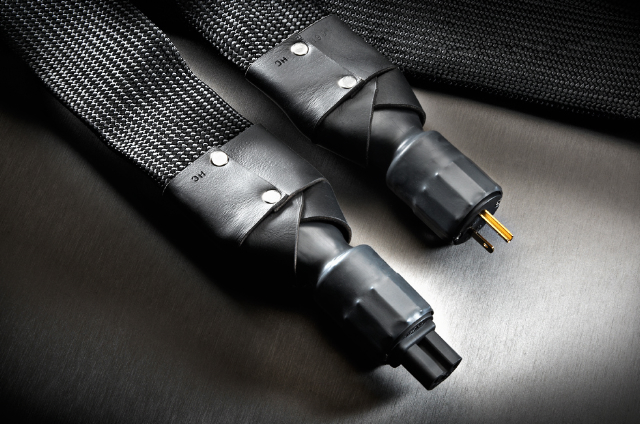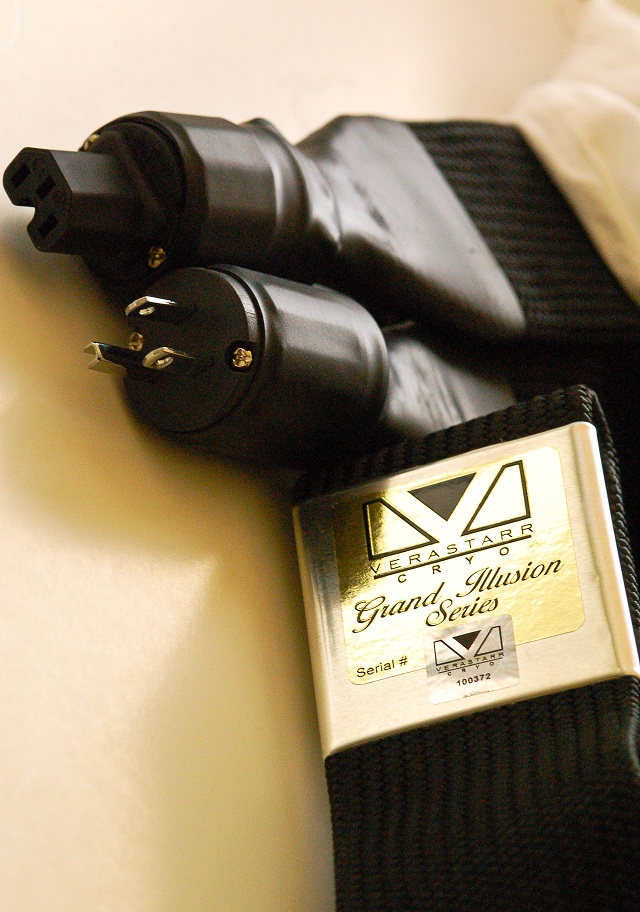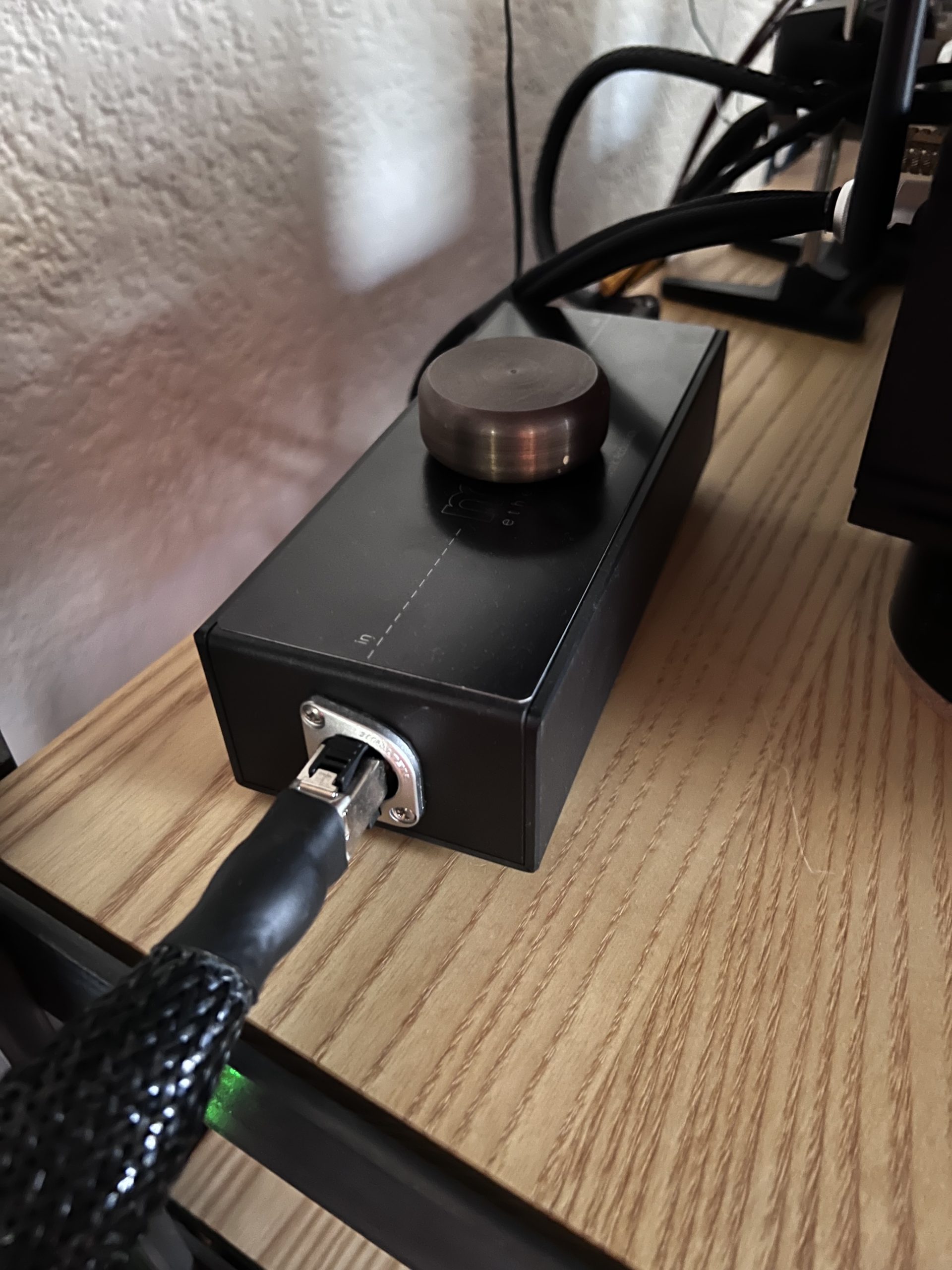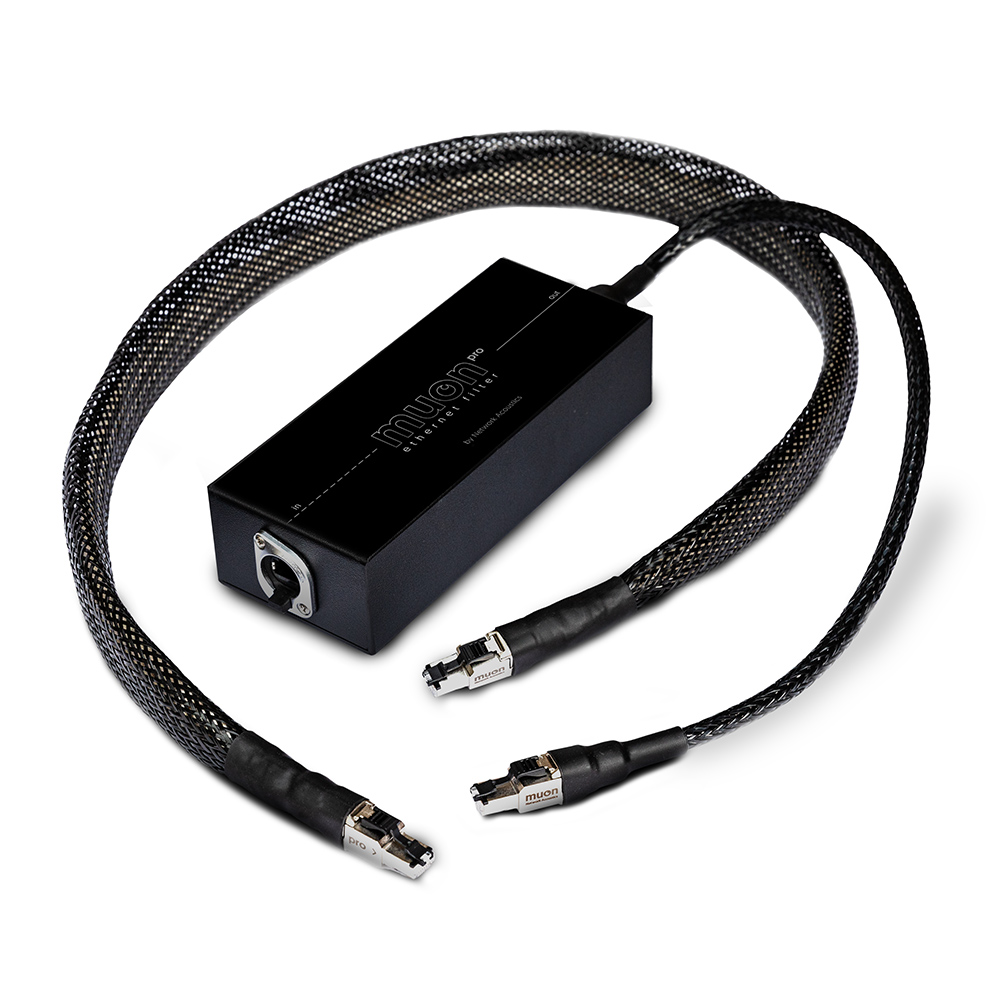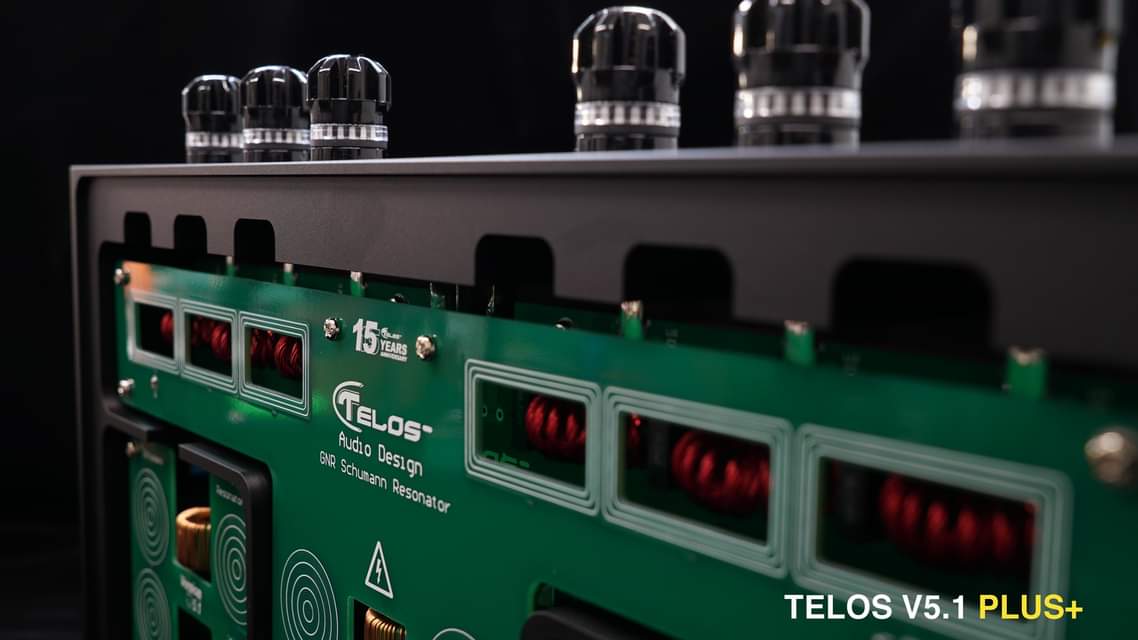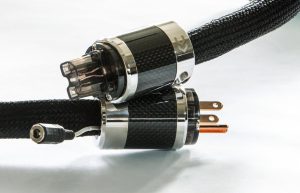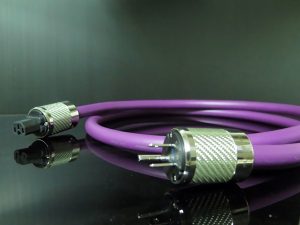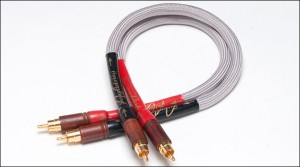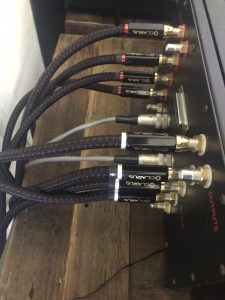Verastarr Grand Illusion AC power cords ($2500 in 6 foot length) use high purity copper metal foils and produce a musical presentation that is big, bold, and robust. Not to be clichéd here, but being a copper-based cable, and using lots of copper to address skin effect with its four 2-inch wide foils, music with this cable possessed the clichédly qualities inherent of the better copper-sounding cables: tonally warm and rich, and extended top to bottom - though not necessarily the top-end extension heard in silver-based cables. These are wonderful cables that are not only dead quiet, but flexible and a work of art. Housed in a black cloth jacket and possessing leather end "caps," the Grand Illusions speak luxury. Meaning at the $2500, the Grand Illusions not only sound like it, but they look like it. Here you clearly get your money’s worth.
But, back to the music. My regular AC cords are the Mega Power Lynx from Lumionus Audio. I bought these after I reviewed them back in Issue 50 simply because they mated so well with the Clayton M200 Class A amplifiers. By saying "mated so well"… well they allowed the Claytons to do everything I wanted them to do, and then some.
Now the Mega Power Lynx and Grand Illusions could not be any more different in design, and so in many aspects, music, with either, sounded different. From the Luminous Audio website… “The Mega Power Lynx is an extremely high quality, 9 gauge composite, 99.7% OFC, stranded copper power cable. …Natural rubber insulation is used for its excellent damping characteristics and dielectric properties at 110 Volts / 60Hz. A star quad configuration is utilized for the Mega Power Lynx topology as we have experienced tremendous success with this technology in the balance of A/C power transfer. In an upgrade from the Power Lynx Ultra, the Mega Power Lynx has a large, high-gauss neodymium magnet installed at each end of the cord. These strong rare-earth magnets establish a passive motor circuit which reduces noise in our cable while actually boosting micro dynamics in recorded music. Our research has proven the extremely strong magnetic field encourages the current and voltage to arrive at the load in phase resulting in many positive effects. They also serve as a mechanical vibration damper to control the micro-vibration caused by the flow of a/c current. …The cables are terminated with Japanese made, silver-plated copper, Audio Grade Edison and IEC connectors.”
As I noted above, the Grand Illusions use wide copper foils, a luxurious cloth covering, leather end-caps, and as far as I can get from their site… “virgin PTFE dielectric, cryo treatment on all cable components, silver plated copper braid shield, teflon outer jacket, and cryo treated Rhodium plated bronze connectors.” And as word has it, a whole bunch of proprietary "passive filtering" to address noise and whatnot that can muck up the sound with crap in the flow of AC, but not the flow itself, by imparting a sonic signature into the flow of AC. The cables are all handmade and are of an artisan-quality in fit and finish. Truly beautiful to see and touch.
Differences? Preferences? Both are rather easy. The Grand Illusions simply presented our music with a way bigger sonic picture than the Mega Power Lynx. One that is, as I said in the introduction, big, bold, and robust. Being extended and dynamic, the music with Grand Illusions had that presentation that is, for lack of a better term, more luxurious. Luxurious in the sense of this is what the best sounds like. There is a real economy of scale going here; one where the quality, sound-wise and whatever-wise, is evident in what you pay. Cheap is cheap, good is affordable, better is getting pricey, but the best is expensive—it is going to cost you more, no doubt way more to own the best out there.
Music with the Mega Power Lynx sounded less "expensive." That is, the Mega Power Lynx offered a less "expensive" sound. One where the music was less robust, that was perhaps leaner and as such, sounded faster. Faster? Well when the tonal shift is towards the leaner, lighter side (less warmth or richness), then for sure, you think you are hearing more details and clarity—hence the sound seems faster. The music presents itself as having more speed as the sonic tapestry is lighter tonally. So more speed and clarity? Not really. Music with the Grand Illusion had it too, just mixed into the whole, so that, yeah, you got it all—but without drawing attention to itself. More about balance. Music with the Mega Power Lynx was also perhaps a touch grittier and grainier. Brighter too, but not in the sense of silver or etch—just more lit at the mid to top end, no doubt due to the leaner perspective of the Mega Power Lynx. All of which is not to suggest that the Mega Power Lynx is a bad cord, or one that was embarrassed in any way by the way more expensive Grand Illusion. After all, at $699 for 2 meters, it is still a steal and one of the better cords I have heard… and still love. It was just being overshadowed by the Grand Illusion’s superiority.
Music with the Grand Illusions was never bight, but never rolled-off or euphonic. The music was just… all there. Right and engaging. Bass had this deep solid presentation that was ever-so captivating. Solidity comes to mind. Sold in terms of something massive and dense. Which is not to say the music was dense lacking space and air, just the opposite.
So yeah, music with the Mega Power Lynx did not sound as big, or as rich as the Grand Illusion, and for sure the two cords presented the music differently. Perhaps all of this is due to Mega Power Lynx’s silver plugs, the magnets, the geometry… maybe to all of it?! No doubt these all play an issue, but I will say that certain music had a slight preference for one cord over the over. Not because one cord was better, but because, as I said before, they were different and that difference made things more right than the other on different recordings. One could easily argue that I was using the cords as a seasoning, or whatever, to color the sound of my music, and well, I can live with that. In the end I want to hear my music how I think it sounds best and so, so be it.
The Grand Illusions are amazingly good AC cords; letting the music flow through with such an engaging sound. Quiet, dynamic, propulsive, extended… you get it all. But to get it all will cost you. Worth it? I say a resounding yes.
Verastarr
http://verastarr.com





